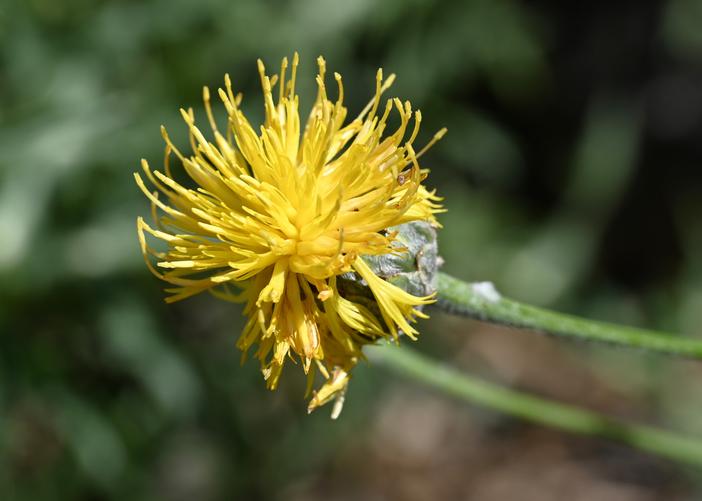Rock Knapweed
(Centaurea rupestris)
Rock Knapweed (Centaurea rupestris)
/
/

Krzysztof Ziarnek, Kenraiz
CC BY-SA 4.0
Image By:
Krzysztof Ziarnek, Kenraiz
Recorded By:
Copyright:
CC BY-SA 4.0
Copyright Notice:
Photo by: Krzysztof Ziarnek, Kenraiz | License Type: CC BY-SA 4.0 | License URL: https://creativecommons.org/licenses/by-sa/4.0 | Uploader: Kenraiz | Publisher: Wikipedia Commons

















Estimated Native Range
Summary
Centaurea rupestris, commonly known as Rock Knapweed, is a deciduous perennial herb native to rocky slopes and grasslands in Italy and the Balkans. It typically grows to a height of 1-3 feet (0.3-0.9 meters) and a width of 1-2 feet (0.3-0.6 meters). The plant has a clumping form with deeply lobed leaves and thistle-like yellow flowers that bloom in the summer, offering a moderate level of showiness. The flowers attract pollinators such as bees and butterflies, adding to the ecological value of the plant.
Rock Knapweed is appreciated for its drought tolerance and ability to thrive in poor soils, making it a suitable choice for rock gardens, xeriscaping, and restoration projects. It is also used in wildflower meadows and as a border plant in gardens. This knapweed prefers full sun exposure and can tolerate a range of soil types, provided they have good drainage. While it is not known for having aggressive roots or being particularly prone to diseases, it can self-seed and spread if not managed, which should be considered when planting in gardens.CC BY-SA 4.0
Rock Knapweed is appreciated for its drought tolerance and ability to thrive in poor soils, making it a suitable choice for rock gardens, xeriscaping, and restoration projects. It is also used in wildflower meadows and as a border plant in gardens. This knapweed prefers full sun exposure and can tolerate a range of soil types, provided they have good drainage. While it is not known for having aggressive roots or being particularly prone to diseases, it can self-seed and spread if not managed, which should be considered when planting in gardens.CC BY-SA 4.0
Plant Description
- Plant Type: Herb
- Height: 1-2.5 feet
- Width: 1-2 feet
- Growth Rate: Moderate
- Flower Color: Yellow
- Flowering Season: Summer
- Leaf Retention: Deciduous
Growth Requirements
- Sun: Full Sun
- Water: Medium
- Drainage: Medium, Fast
Common Uses
Bee Garden, Bird Garden, Butterfly Garden, Deer Resistant, Drought Tolerant, Hummingbird Garden, Low Maintenance, Rabbit Resistant
Natural Habitat
Rocky slopes and grasslands in Italy and the Balkans
Other Names
Common Names: Felsen-Flockenblume
Scientific Names: , Centaurea rupestris, Centaurea rupestris var. rupestris, Centaurea rupestris subsp. rupestris, Centaurea collina, Centaurea vranjana, Centaurea argentea, Acrocentron tenuifolium, Calcitrapa rupestris, Centaurea rupestris subsp. aculeata
GBIF Accepted Name: Centaurea rupestris L.